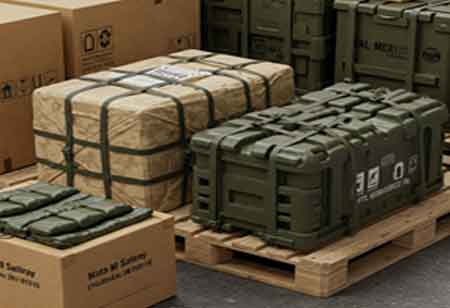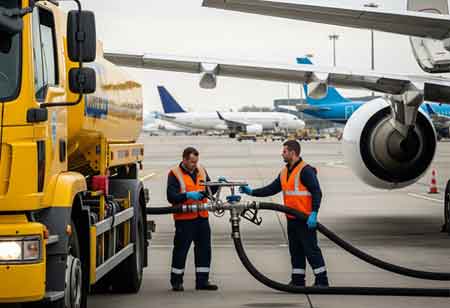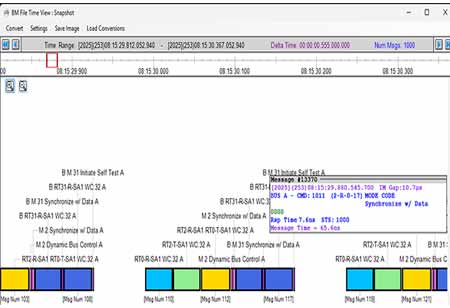In today’s complex geopolitical landscape, military logistics ensures the operational readiness of armed forces. Military packaging is one of the logistical frameworks of a specialised sector safeguarding sensitive equipment, weapons, and technology across diverse environments. The rising emphasis on defence modernisation and the growing threat landscape has accelerated the demand for advanced, resilient, intelligent military packaging solutions in Europe. Integrating AI, sustainability goals, and strategic supply chain innovation transforms how military assets are packaged, stored, and transported.
Strategic AI Integration Strategies in Packaging
Several factors drive the evolution of military packaging in Europe. First, the geopolitical instability in Eastern Europe, particularly in response to the war in Ukraine and broader operations, has increased the urgency for reliable and rapid deployment of military assets. Military packaging is no longer just a logistical formality. It has become a strategic necessity. European defence agencies and contractors actively invest in packaging systems that ensure long-term protection against harsh climates, physical shock, and chemical exposure while maintaining compliance with defence and standards.
The growing reliance on high-tech military hardware, such as drones, communication systems, and autonomous ground vehicles, requires packaging solutions that offer advanced protection for sensitive electronics. AI is reshaping this sector by improving the design, production, and lifecycle management of military packaging. AI-driven simulation tools help engineers design packaging tailored to specific military assets, optimising for shock resistance, space utilisation, and cost. Predictive analytics enables defence logistics planners to forecast demand and assess risks associated with storage conditions or transportation routes.
AI powers innovative packaging systems embedded with sensors that monitor humidity, vibration, and temperature in real-time, triggering alerts if conditions exceed safe thresholds. The innovations have direct applications across European defence supply chains. From storing advanced missile components to transporting field communication devices, AI-enhanced packaging reduces the risk of damage, increases traceability, and enhances operational efficiency. The military often operates in remote or unpredictable regions, and packaging that can think and adapt by transmitting environmental data or recalibrating internal conditions becomes an invaluable asset.
Innovative Packaging: Revolutionizing Supply Chains
As military budgets in Europe continue to rise, the defence packaging industry is witnessing several key trends. One major trend is the shift toward modular and reusable packaging systems. Defence agencies demand sustainable solutions that reduce waste and cost over time, leading to the development of rugged containers that can be customised, refurbished, and redeployed. Modular packaging extends product life and simplifies logistics during deployment, especially for multinational missions.
The European Union’s emphasis on eco-friendly operations pushes military packaging suppliers to incorporate recyclable materials, reduce hazardous substances, and implement energy-efficient manufacturing processes. Sustainability has become a crucial procurement criterion even within defence, which is traditionally a highly conservative sector. Digitalisation is another driving force with the rise of blockchain-based tracking systems that offer secure, tamper-proof records of the journey and condition of military cargo. The systems integrate seamlessly with AI and IoT sensors, creating a complete digital twin of each package that defence operators can access from anywhere.
The European military packaging sector faces considerable challenges. While it provides overarching guidelines, national defence ministries often impose additional requirements, making cross-border packaging compliance complex. The lack of standardisation increases costs and slows down interoperability among allied forces. Not all players in the industry have adopted AI or innovative packaging tools, leading to a technological gap that can affect coordination and performance during joint operations. Resistance to change, limited access to skilled talent, and cybersecurity concerns further hamper full-scale digital transformation.
Stakeholders must adopt a multi-layered approach. Joint task forces can facilitate the creation of unified specifications that streamline procurement and deployment. Governments can offer incentives or mandate digital capability requirements in military packaging contracts. Cybersecurity frameworks must also be built into packaging systems from the ground up. Since AI and IoT devices within innovative packaging generate and transmit critical data, robust encryption and secure communication protocols are vital to prevent data breaches or system hijacking.
Trends Shaping the Market of Military Packaging
The market for military packaging in Europe is poised for steady growth, driven by heightened defence spending, modernisation of military logistics, and increasing geopolitical uncertainty. The need for agile, durable, and intelligent packaging solutions has never been more pressing. Military packaging plays an increasingly strategic role in supporting rapid-response missions, transporting lifesaving medical supplies, or securing autonomous weapons systems.
From a broader economic perspective, the growth of this sector fuels innovation and job creation. Packaging manufacturers, AI developers, logistics providers, and cybersecurity firms all benefit from increased demand and investment. As Europe aims to strengthen its strategic autonomy and reduce dependency on non-EU defence suppliers, developing a robust, digitally advanced military packaging ecosystem becomes a key enabler. Collaborative projects funded under these programs will likely yield breakthroughs in material science, energy efficiency, and AI integration, further cementing Europe’s leadership in sustainable defence logistics.
Military packaging in Europe is undergoing a profound transformation fueled by technological innovation, operational necessity, and strategic foresight. AI and smart technologies redefine traditional packaging paradigms while sustainability and standardisation reshape procurement and manufacturing processes. The sector holds immense potential to enhance Europe’s defence capability, security infrastructure, and economic resilience. As Europe fortifies its military posture in an increasingly uncertain world, intelligent and sustainable packaging will be critical in securing the future.









